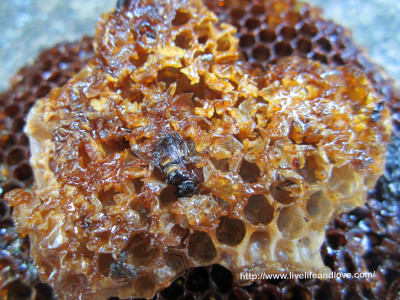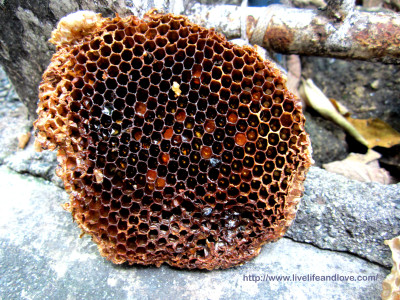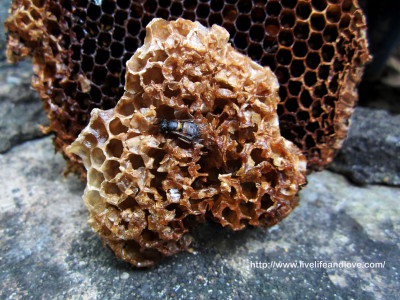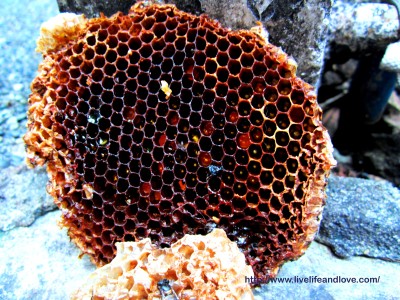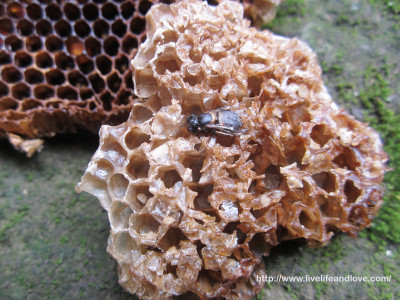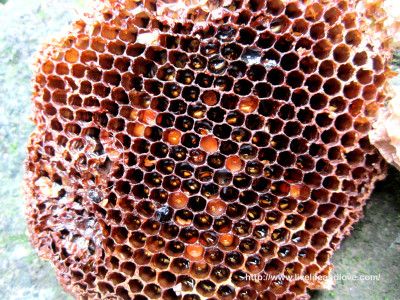I’ve discovered a sticky beehive inside the tall rocks in the garden.This is a natural beehive and not a man-made.I was amazed to see for the first time a great number of young honeybees inside the beehive.This is where the stinging honeybees stored their wax cells for rainy food. I’m just curious about their nesting areas.One thing I loved about bees behavior is they know how to adjust to certain environment,they collect honey during dry days and save it. Just a way of getting ready ahead of time.
Beehive is dark brown in color, sticky and very shiny. The visible structure is durable, good enough to protect the young honeybees inside the hole. With too many holes in uniformed sizes, other holes appeared to be full of honey and some holes for the nesting site of the young ones.
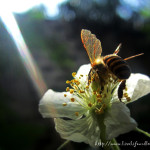 Honeybees as an agent of pollination.
Honeybees as an agent of pollination.
With this discovery,I’ve completed the full version of my articles, It’s all about honeybees, their everyday routine as an agent of pollination, body structure, my morning bonding with honeybees as my subject of photography and many more… Just don’t forget the importance of what has been contributed previously, my attempt to disturb this honeybees for five minutes in order to take few shots. I’m a honeybee lover and I never plan to drive them away.I will just let them stay behind and let the future takes its place.
(Click on images to view larger)
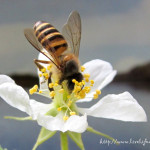 To view honeybees as my morning subject of photography.
To view honeybees as my morning subject of photography.
I was even surprised to see queen bee making honeycomb.The wax secreted in order to make this certain structure.
Sunny sheltered position in order to get a good view. Quiet tough to move the beehive away from the nesting area. The proper timing,to wait for the mother bees out to pollinate the flowers around is the right time.
If you click the close up, you’ll see the young honeybees still inside the holes. Just wondering, how a small stinging insect can produce a beehive much bigger and larger than their own size.
Other parts has unfinished portion and broken off. I think the construction is still going on.
The image below, shows great number of young ones inside the beehive.

